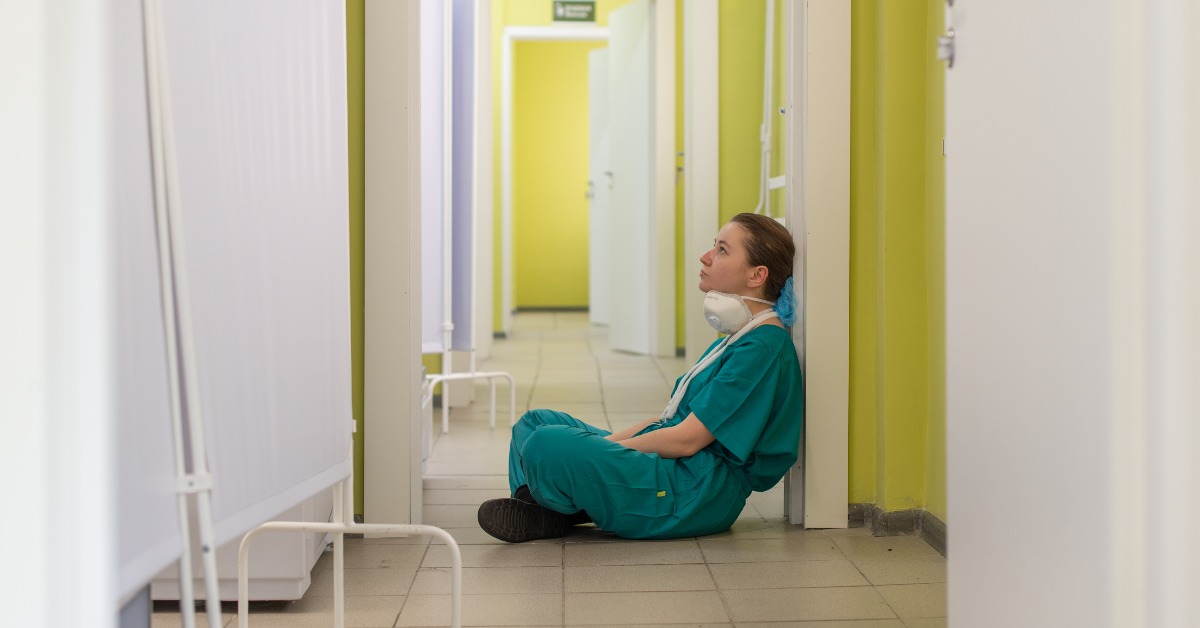We all know that as nursing students there’s a lot on our plates. We are expected to understand the detailed inner workings of the human body, disease processes, medications, life-saving procedures, and a wide variety of interventions, among other things.
Nursing school programs utilize two separate teaching methods. The first is content learning, which is in the classroom with a combination of lectures, videos, textbook reviews, practice questions, and content exams. Learning hands-on skills, the second aspect of nursing school, is often the hardest part for students.
The hands-on learning component consists of a series of skills labs and clinical rotations. This is where we as nursing students will learn the patient care skills used every day on the job.
Today, we will focus on the hands-on learning portion of nursing school, including the teaching and testing methods, why it is challenging for students, and how to sharpen your skills at home.
Keep reading because I’m going to divulge my best at-home clinical skill practice ideas you might not have seen before.
Becoming a nurse has never been easier.
Set yourself up for success with Lecturio.
What’s the Scoop on Clinical Skills?
Clinical skills are the hands-on procedures utilized by nurses in patient care. Though the nursing scope of practice may depend on your location, there are several core skills that almost any nurse will need to know.
For instance, intravenous catheter insertion, wound care, patient assessment, medication administration such as injections, vital signs, and safety precautions are what I have found to be the most commonly tested competencies.
How are patient care skills taught?
In the majority of nursing education programs, you will be taught these tasks in a controlled skills lab, usually with mannequins instead of living humans.
Once you have proven your abilities on a mannequin, you’ll get to use your skills on real patients during clinical rotations under the supervision of a more experienced nurse or nursing clinical educator.
Why are skills labs challenging?
Many students stress about skills labs in particular because their lab time is often limited and there is a seemingly endless list of steps for each skill, all of which are important. Additionally, the movements involved in nursing tasks don’t come naturally to most.
Students are also often expected to learn multiple skills at once and to perform them in front of an instructor as a test of competency, which only adds to the stress.
If you are lucky enough to have 24/7 access to the skills lab, we highly recommend putting in as much time there as you can. However, for the rest of us who only have limited supervised time in the skills lab, practicing at home is vital to feeling comfortable and attaining success in skills lab simulations.
Related videos
Benefits of at-home practice
When you hone the muscle memory of skills, it can help you not have to think so much about your motor skills and coordination during the skills lab exam.
The more you practice at home, the easier your skills lab exam will seem.
Practicing at home also allows you to get the basics mastered so that during supervised skills lab practice you can focus mostly on weak points.
Unique Ways to Practice Nursing Skills at Home
If your nursing program is similar to mine, you likely received (or were required to buy) a student supply kit with the equipment for clinical skills. You should take this kit to the skills lab to practice every time.
However, the school skills lab isn’t the only place to work on your skills. Even if you don’t have a mannequin at home (they’re quite expensive!), there are other creative ways to master the muscle memory of several skills.
Let’s dive into several ways to use the supplies you were given combined with a few household items to hone your nursing skills outside the pressure of the skills lab.
IV insertion
Intravenous catheter insertion, or IV Insertion, is a common skill required of nurses and is often one of the most difficult to master.
In my skills lab, they have a fake arm designed to simulate a real patient. However, at home, where no fake arm is available, a bit of creativity is required. My favorite way to practice IV insertions at home uses IV tubing, a saline flush, and an IV start kit from the student nurse kit as well as food coloring, tape, and a covering of sorts to act as “skin”.
First, put food coloring into your saline flush, then connect it to the IV tubing, and inject the solution until the tubing is completely primed. Ensure both ends are clamped off on the tubing to create a closed system. This is going to be your blood-filled vein. Next, find a flat, hard surface like a desk and tape the IV tubing vertically from where you are sitting. Finally, cover the IV tubing with the skin substitute you have chosen, ensuring it is taut and taped down. My pick is always a piece of a clean trash bag. It is better if you cannot see the tubing underneath so that you can practice finding the “vein” without being able to see it like on a real patient.
With this setup, you are now ready to practice your IV insertions using your IV start kit. Just pretend your setup is your patient’s arm and walk through the steps, repeating as many times as you need.
Wound care
In the skills lab, there are custom-designed silicone wounds on mannequins, but at home, that’s not available. Though you could just apply wound care dressings to your own leg or a friend’s to practice, it is hard to get the hang of packing and cleaning a deep wound if there is no actual wound.
Now, this is going to sound crazy, but hear me out. Using Jello is how I practice wound care at home. Stay with me here, I promise it works!
Make the Jello in a vessel of your choosing ensuring that it is at least 1–3 inches deep, then slice a significant wound into the Jello. After, cover the Jello with plastic wrap, tuck it into the wound, and secure it so you don’t make a mess and your dressings will stick.
From there, utilizing the gauze and dressings from your student nurse kit, run through wound packing, cleansing procedures, and securing dressings until you’re comfortable.
Injections
Intradermal, subcutaneous, and intramuscular injections are easy to review at home. Simply use the injection supplies provided in your nursing kit and hunt down a clean, thick sponge.
Use the sponge as your injection site. It is great for getting familiar with holding syringes, mastering the proper angles, and visualizing the correct depths. The sponge soaks up any fluid which is nice, too.
Physical assessment and vital signs
Assessing patients and their vital signs are the core responsibilities of a nurse in any role. Luckily, these things are easy to rehearse at home. Since assessment and vital signs are not too invasive, you can ask a close friend or family member to be your patient as you master a complete head-to-toe assessment of the patient and their vital signs.
If you can’t get someone to help you out at home, most aspects can be practiced with a stuffed animal, it just won’t be as good as having a live person.
PPE and handwashing
As long as you have a sink and personal protective equipment (PPE) included in your supply kit, donning and doffing PPE and handwashing is straightforward to review at home.
Simply pretend you are outside your patient’s room and go through the correct order of proper hand washing, donning your PPE, and then doffing it. You can also master the annoying task of putting on sterile gloves and maintaining a sterile field at home in a similar fashion.
Utilizing scenarios and verbal recitation
Work on your clinical skills at home without your student nurse kit, using scenarios found in your textbook or online. Verbally recite the detailed steps that you would perform as the patient’s nurse while visualizing the correct movements.
Repeating the steps out loud and applying your skills to scenarios is the best way to make clinical skills second nature even without having any supplies.
Take advantage of Lecturio
Lecturio is a fantastic resource when practicing your nursing skills at home. In the Lecturio course on clinical skills, Professor Rhea walks you through the steps of each skill on a real person, with detailed explanations. Along with the ability to watch the course repeatedly, you can also download the slides or a checklist.
Perform the steps while watching or referencing the checklist until you can comfortably execute all of your required nursing skills. I also recommend filming yourself to review and improve your skills.
Take the Course: Clinical Skills for Nurses
Gain fundamental skills related to working with patients
Final Thoughts
Ultimately, clinical skills labs, especially on test day, can be a daunting part of nursing school; but as they say, practice makes perfect. Going over skills at home helps you prepare for the lab so that you can make the most of your time and ace your test with flying colors.
Despite not having the same resources at home as in the lab, you don’t have to empty your pockets to get extra practice in. These at-home ideas are affordable and attainable. With Lecturio’s resources and some creativity outside the skills lab, the road to nursing school success is smooth sailing.





